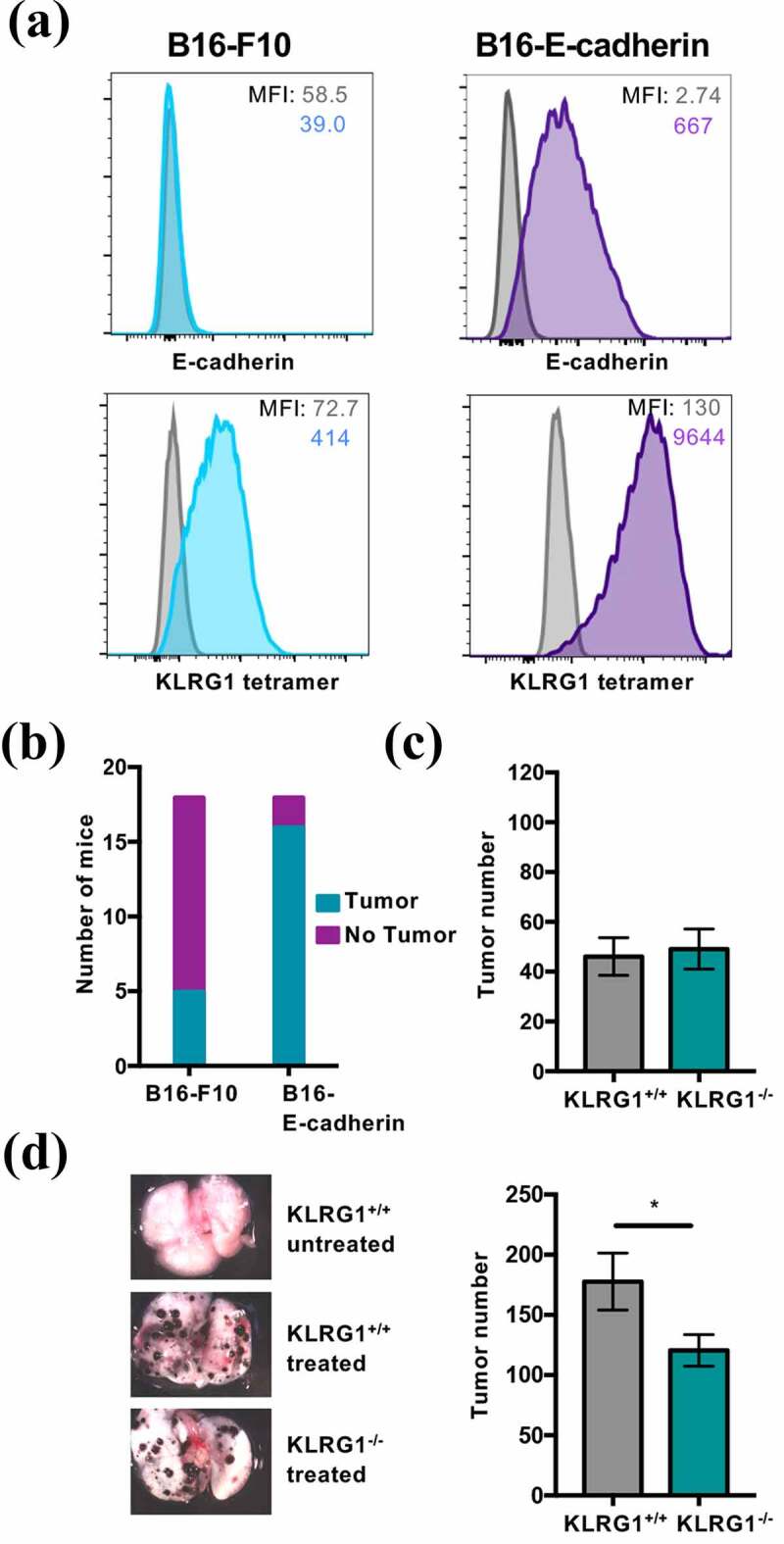Figure 1.

KLRG1 knockout mice display fewer B16-E-cadherin tumors in the lungs
(A) Flow cytometry profile of B16-F10 melanoma and B16-E-cadherin melanoma stained with an anti-E-cadherin mAb or KLRG1 tetramer. (B) KLRG1+/+ mice were intravenously injected with 2 × 104 B16-F10 cells or 2 × 104 B16-E-cadherin cells. Day 21 post-injection, the presence or absence of at least one tumor was examined macroscopically (n = 18). (C) KLRG1+/+ and KLRG1−/- mice were intravenously injected with 2 × 105 B16-F10 cells/mouse. Total tumor number in the lungs was quantified at day 21 post-injection (n = 13–14). (D) KLRG1+/+ and KLRG1−/- mice were intravenously injected with 2 × 105 B16-E-cadherin cells/mouse. Left panel: Representative images of lungs from KLRG1+/+ untreated, KLRG1+/+ treated and KLRG1−/- treated mice. Right panel: Total tumor number in the lungs was quantified at day 21 post-injection (n = 14). (Data are representative of (A, D) or pooled from two experiments (B-D), error bars indicate S.E.M.) *p < .05, **p < .01, ***p < .001, and ****p < .0001.
